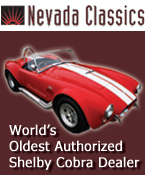 
 Main Menu
Main Menu
|
 Nevada Classics
Nevada Classics
|
 Advertise at CC
Advertise at CC
|
 February 2025
February 2025
|
| S |
M |
T |
W |
T |
F |
S |
| |
|
|
|
|
|
1 |
| 2 |
3 |
4 |
5 |
6 |
7 |
8 |
| 9 |
10 |
11 |
12 |
13 |
14 |
15 |
| 16 |
17 |
18 |
19 |
20 |
21 |
22 |
| 23 |
24 |
25 |
26 |
27 |
28 |
|
|
 CC Advertisers
CC Advertisers
|
|

11-21-2001, 08:57 PM
|
|
CC Member

|
|
|
Join Date: Oct 2001
Location: Suisun City Ca,
Posts: 20
|
|

 Not Ranked
Not Ranked
 low oil pressure
low oil pressure
hi guys,
I was curious as to what oil pressure is acceptable on the fe motors 427 center oiler and 428 if there's a difference. my pressure seems low it tops out at just under 40 # what oil should i use? what can I do to bring the pressure up? also is that pressure going to damage the engine? thanks Ed
__________________
Ed aka Brizz
|
-
Advertising


11-21-2001, 10:32 PM
|
|
CC Member

|
|
|
Join Date: Mar 2000
Location: Virginia, USA,
VA
Cobra Make, Engine: Genuine original Unique MotorCars 427 S/C, with a Genuine original Ford 427 Side-oiler.
Posts: 312
|
|

 Not Ranked
Not Ranked
Ed,
The rule of thumb is 10 PSI minimum per 1000 RPM. IE: 60PSI at 6000 RPM.
As far as the probable cause, if your pressure comes up to 40 psi just above idle and then stays there, you may be able to increase it with a higher pressure relief spring in the oil pump.
If it gradually increases with RPM all the way up, you likely have excessive bearing clearances, or an internal leak in the oiling system, or an insufficient oil pump volume.
If it actually decreases with increasing RPM, the most likely culprit is excessive rod bearing clearance.
My 427 runs 35-40 psi at idle, and tops out around 100 psi by 6000 RPM, remaining fairly constant above that.
Hope this helps,
__________________
David
|

11-22-2001, 06:22 AM
|
|
CC Member

|
|
|
Join Date: Feb 2000
Location: Enfield, CT,
Posts: 542
|
|

 Not Ranked
Not Ranked
David:
Rule of thumb 10#/1000 doesnt apply to the FE, as your engine also shows. Your builder thinks the same way as mine does, old school. Your advice otherwise is spot on.
Ed:
Every HP FE I have had experience with that runs less than 60#@5000+ has had bearing problems, especially the center oiler 427 and 428's. Thats why they made the side oiler, to salvage lower end oiling shortages. The extreme oil pressure also helps compensate for a lack of GOOD racing type rod bearings that are not available anymore. Other things to do include restrictors in the oil feeds to the rockers, matching the oilpump/block port, and matching/smoothing the oilfilter adapter/block passages. BTW, I change rod bearings every other year, and oil pump drive shaft and distributor gear pin yearly as a precaution due to the high loads incured with 50w racing oil and 7000rpm on a regular basis.
Don |

11-22-2001, 11:07 AM
|
|
CC Member

|
|
|
Join Date: Oct 2001
Location: Houston,
Posts: 74
|
|

 Not Ranked
Not Ranked
 Oil Pressure
Oil Pressure
Pumps, oil pumps included, produce flow, not pressure. Pressure is the result of restrictions in the circuit or system. For instance, the oil pressure you see at start up is high, even at idle, and then decreases to some stable level, because of the oil's viscosity. It is cold, thicker, at start up, thus creates more resistance to flow than it does when the engine warms up, thinner viscosity. The oil pressure then varies with pump speed, oil flow, but should top oil at some rpm and not go any higher.
Bearing clearances, oil gallery dimensions, turns(90 or otherwise) all contribute to the restrictions in an engine that the oil sees. Viscosity is also a contributor as I mentioned. I am not an FE expert, but at some rpm, the pressure should not go any higher because the oil pump will bypass(relieve) over a pressure relief valve set at some predetermined pressure. Otherwise if the pressure continued to increase with rpm, something will have to give. Since oil is essentially incompressible, a positive displacement pump will continue to put out more flow with each higher rpm, and since you can only flow so much volume around the system, pressure will have to increase. At some point, a failure has to occur, pump, line rupture, or something.
High pressure at start up really means nothing. In fact it could mean that the oil is not flowing as it should. What you want is for the oil to flow as quickly as possible at start up so the main, cam, and rod bearings get oil quickly and don't rotate dry during the start up period. To do this, you need an oil with excellent flow properties at low temps. The best at this is Mobil 1, and in all high performance engines, I would use a 15W-50. It will flow quickly at start up and give you good protection at operating temp. It has a very high viscosity index naturally because it is a PAO, and that is why it will flow so quickly at start up.
Sorry for this to be so long. I am not questioning any one's experience with their set up.

|

11-22-2001, 01:30 PM
|
|
CC Member

|
|
|
Join Date: Oct 2001
Location: Suisun City Ca,
Posts: 20
|
|

 Not Ranked
Not Ranked
 oil pressure and turkey!
oil pressure and turkey!
Happy Thanksgiving to all! thanks for the responses guys, anybody care to add?????? this is a subject that I'd like to hear as much about of as possible!
Here are a couple more logs for the fire!
If there is a problem with bearing clearance's can this problem be fixed whith the motor in the car bye removing the pan? and if so how can i check it?
About the actual oil pump. Is there an after market oil pump that is the cool set up for F.E. motors? If not, a hopp up for the existing one? How is this pressure valve increased in adjustment?
Also I over heard someone talking about oil pans making a difference,somthing about baffles perhaps?? mine has a "T" shaped bottom I dont know the brand. I'm going to pull it to take a look inside the motor. Is there any thing I should look for in the pan to identify it as a good pan?
thanks guy's
__________________
Ed aka Brizz
|

11-23-2001, 11:57 PM
|
|
CC Member

|
|
|
Join Date: Mar 2000
Location: Virginia, USA,
VA
Cobra Make, Engine: Genuine original Unique MotorCars 427 S/C, with a Genuine original Ford 427 Side-oiler.
Posts: 312
|
|

 Not Ranked
Not Ranked

Ed,
I run a Melling Hi-volume pump, and I replaced the spring with the Ford Power Parts hi-pressure spring. My side-oiler block also has a relief spring at the rear, which I also replaced with one from FPP.
Anytime you install a new oil pump, always disassemble and clean it, as they usually have some leftover dust from machining.
As Don pointed out, the 10psi/1000rpm minimum is a general rule of thumb, FE's really need more than this.
I also have .093" restrictors in the rocker shaft feed holes, and the lifter galleys are blocked, as I run solid lifters.
I run a chrome-moly oil pump shaft, and a Bronze distributor gear to avoid wear on the cam. I replace the bronze gear annually.
As far as servicing the motor in car, you can replace rod bearings fairly easily, and mains with some difficulty, but getting accurate measurements will be tricky with the motor assembled.
Check with George Anderson for advice on this.
About the pan, a properly baffled pan and pickup will help maintain oil pressure during hard cornering, accel and braking, but shouldn't make any difference while stationary.
Good luck,
__________________
David
Last edited by Cobranut; 11-24-2001 at 12:01 AM..
|

11-24-2001, 02:39 PM
|
 |
Senior Club Cobra Member

|
|
|
Join Date: Mar 2001
Location: Southern Connecticut,
CT
Cobra Make, Engine: SPF - 351W, 944 non-turbo
Posts: 2,105
|
|

 Not Ranked
Not Ranked
Hey Ed:
I also had a low oil pressure concern. My builder (HRE) used 20W-50 Castrol with some additive (no doubt a thickener). The oil pressure was never as high as I expected and would show signs of starvation even though I have a 9 quart pan. I decided to go the other way and use a thinner oil. I replaced the paraffin oil with Mobil1 oil and filter. I used the 5W-30. The pressure was much higher with the 5W-30, it also went up with RPM which it did not do previously. It idles a little over 50 PSI.
For the record I don't have an FE. My own theory is the thinner oil is better able to go through all the plumbing and cooler than is the thicker oil. Mobil1 comes in many viscosities, 0W-30, 0W-40 (Porsche recommends for its newer cars), 5W-30, 10W-30, and 15w-50 (Porsche recommends for its older cars). Ford Motorsports recommended the 5W-30 to me. I also like the feeling that the oil gets up and goes during cold weather (I live in Connecticut). Good luck!
Bob In Ct
|

11-24-2001, 04:42 PM
|
|
CC Member

|
|
|
Join Date: Mar 2001
Location: E BRUNSWICK N.J. USA,
Posts: 3,841
|
|

 Not Ranked
Not Ranked

HI ED RICK LAKE HERE I HAVE AN ALL ALUMIUM SHELBY MOTOR. IT HAS A MELLING HIGH VOLUME PUMP WITH A 100 HIGH PRESSURE SPRING FROM FFP IN CALI. I RUN 15W-40 OIL VAL. WHEN HOT MY MOTOR ILDES AT 775RPM AND THE OIL PRESSURE IS 25-30 LBS HOT WITH THE TEMP ON THE MOTOR AT 190F I CALLED MIKE LEFEVERS AT MI-TECH, THE MOTOR IS STILL NEW AND NOT BROKEN IN BUT THE PRESSURE GOES AT 1100RPM UP TO 60PSI AND TOPS OUT AT 75PSI WITH A OIL LINE GAUGE FROM AUTOMETER. HE SAID IT IS OK  I HAVE A CANTON T PAN ON MY MOTOR WITH A 3 QUART ACTUSUMP RESERVE FOR PROTECTION AND AS A PRE OILER FOR START UPS ON THE MOTOR. I LEARNED THIS FROM DON AT LOUDON WHEN HE TOOK ME FOR A RIDE AND FORGET ABOUT THE EXTRA 190LBS. AND WE BOTTOMED OUT ON THE ROAD COURSE. THE CORNER OF THE OIL PAN GET HIT AND HE PUT 7 QUARTS DOWN ON THE TRACK. NO DAMAGE TO THE MOTOR  LUCKY DON. I CHECK MY ROD BEARINGS WITH PLASTIC GAUGE AND THE CLEARANCE IS AT BLUEPRINT SPEC. MY MOTOR WAS BLUEPRINTED AND BALANCED SHORT BLOCK.I HAVE ABOUT 100 MILES ON THE CAR AND 1HOUR BREAKIN AND 3 HOURS IN DYNO PULLS TO 6000 RPM. WITH FUEL INJECTION AND A SMALL CAM I AM VERY HAPPY WITH MY SETUP  TALK TO DON OR DAVE SADOWSKI ABOUT THIER MOTORS DAVES MOTOR IS A WORK OF ART. IT RUN A SET OF 58 WEBERS AND SHELBY MOTOR LIKE MINE BUT DOUBLE THE POWER AND IT IS ALL BLACK. IT WAS IN KIT CAR A COUPLE OF MONTHS AGO GOOD LUCK WITH THE CAR AND MOTOR RICK LAKE

|

11-24-2001, 04:54 PM
|
|
CC Member

|
|
|
Join Date: Oct 2001
Location: Houston,
Posts: 74
|
|

 Not Ranked
Not Ranked
 Oil Viscosity
Oil Viscosity
Bob, you are right about a "thinner "oil flowing faster than a thicker oil. What you look for is an oil that will flow fast at start up, and give protection at operating temps. Mobil 1 is the right choice. But it works because of its high VI(Viscosity Index). Unlike mineral oils, Mobil 1, a PAO, has a naturally high VI, and has only a small amount of a VI improver. Cross graded mineral oils have more VI improver and cannot flow as quickly as a PAO at low temps because of this, even though the viscosity rating will be the same. a 0W-30, 5W-30, or even the 15w-50 in Mobil onearegood choices. If you are doing a lot of hard driving, I would reccommend the 15W-50, but for day to day driving, the other two would be ok, with the 0W utilized in colder climates.
|
 Posting Rules
Posting Rules
|
You may not post new threads
You may not post replies
You may not post attachments
You may not edit your posts
HTML code is Off
|
|
|
All times are GMT -7. The time now is 12:53 AM.
|





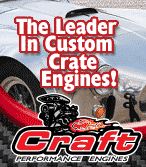


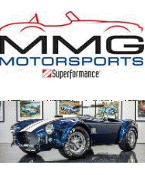


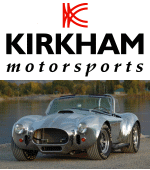

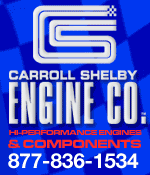







 I HAVE A CANTON T PAN ON MY MOTOR WITH A 3 QUART ACTUSUMP RESERVE FOR PROTECTION AND AS A PRE OILER FOR START UPS ON THE MOTOR. I LEARNED THIS FROM DON AT LOUDON WHEN HE TOOK ME FOR A RIDE AND FORGET ABOUT THE EXTRA 190LBS. AND WE BOTTOMED OUT ON THE ROAD COURSE. THE CORNER OF THE OIL PAN GET HIT AND HE PUT 7 QUARTS DOWN ON THE TRACK. NO DAMAGE TO THE MOTOR
I HAVE A CANTON T PAN ON MY MOTOR WITH A 3 QUART ACTUSUMP RESERVE FOR PROTECTION AND AS A PRE OILER FOR START UPS ON THE MOTOR. I LEARNED THIS FROM DON AT LOUDON WHEN HE TOOK ME FOR A RIDE AND FORGET ABOUT THE EXTRA 190LBS. AND WE BOTTOMED OUT ON THE ROAD COURSE. THE CORNER OF THE OIL PAN GET HIT AND HE PUT 7 QUARTS DOWN ON THE TRACK. NO DAMAGE TO THE MOTOR TALK TO DON OR DAVE SADOWSKI ABOUT THIER MOTORS DAVES MOTOR IS A WORK OF ART. IT RUN A SET OF 58 WEBERS AND SHELBY MOTOR LIKE MINE BUT DOUBLE THE POWER AND IT IS ALL BLACK. IT WAS IN KIT CAR A COUPLE OF MONTHS AGO GOOD LUCK WITH THE CAR AND MOTOR RICK LAKE
TALK TO DON OR DAVE SADOWSKI ABOUT THIER MOTORS DAVES MOTOR IS A WORK OF ART. IT RUN A SET OF 58 WEBERS AND SHELBY MOTOR LIKE MINE BUT DOUBLE THE POWER AND IT IS ALL BLACK. IT WAS IN KIT CAR A COUPLE OF MONTHS AGO GOOD LUCK WITH THE CAR AND MOTOR RICK LAKE Linear Mode
Linear Mode



